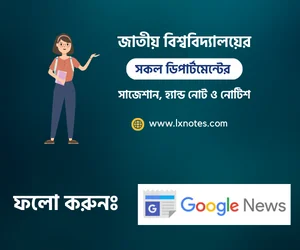Key Facts
- Title: Holy Thursday
- Author: William Blake (1757-1827)
- Title of Author: Precursor of Romanticism
- Published Date: First published in 1789
- Genre: A lyric poem
- Tone: Celebratory and Joyful
- Stanzas: Three quatrains (four-line stanzas)
- Total Lines: 12 lines.
- Rhyme Scheme: AABB style in each stanza
- Setting: A London church on Holy Thursday
ব্যাকগ্রাউন্ড
কবিতাটি লেখা হয়েছে যিশুখ্রিস্টের পৃথিবী থেকে চলে যাওয়ার দিনটিকে ভিত্তি করে। ইসলাম ধর্ম অনুযায়ী আমরা জানি যে যীশু খ্রীষ্ট অর্থাৎ হযরত ঈসা (আ) কে সৃষ্টিকর্তা শত্রুদের হাত থেকে রক্ষা করার জন্য আসমানে তুলে নিয়েছিলেন এবং সেই দিনটি ছিল বৃহস্পতিবার। খ্রিস্টান ধর্ম অনুযায়ী যীশুখ্রীষ্ট ক্রুশবিদ্ধের মাধ্যমে আত্মত্যাগ করেছেন। খ্রিস্টান ধর্মের ধর্মগ্রন্থ গস্পেল অব জন এর ১৩ তম অধ্যায়ে যীশু খ্রীষ্টকে পৃথিবী থেকে উঠিয়ে নেওয়ার কথা বলা হয়েছে। যে দিনে তাকে পৃথিবী থেকে উঠিয়ে নেয়া হয়েছিল সেই দিনটি বৃহস্পতিবার ছিল এবং তখন থেকেই খ্রিস্টানরা বৃহস্পতিবারকে পবিত্র দিন হিসেবে উদযাপন করে আসছে। এই কবিতাটি লেখা হয়েছিল ১৭৮৯ সালে মূলত পবিত্র দিনটিকে উদযাপনের একটি সংগীত হিসেবে।
Symbols
Holy Thursday: Represents a religious occasion and purity.
Innocent Faces Clean: Symbolize moral purity.
Children Walking Two & Two: Signify order and unity.
Red & Blue & Green: Represent vibrancy and diversity.
Grey Headed Beadles with White Wands: Symbolize authority and purity.
High Dome of Paul’s: Signifies the grandeur of the church.
Flowers of London Town: Children as symbols of youth and hope.
Radiance All Their Own: Suggests inner goodness.
Multitudes of Lambs: Likens children to innocence and sacrifice.
Voice of Song: Represents purity and joy in worship.
Harmonious Thunderings: Collective, divine-sounding voices.
Aged Men, Wise Guardians: Authority figures caring for people experiencing poverty.
Cherish Pity: Encourages compassion and empathy.
Drive an Angel from Your Door: Rejecting compassion may lead to spiritual loss.
Figures of Speech
Metaphor: “These flowers of London town!” are compared to children.
Imagery: “Red & blue & green” – Creates vivid imagery of colorful clothing worn by the children.
Irony: “Cherish pity, lest you drive an angel from your door”- Suggests that failing to show compassion might drive away the innocence of the children, who are compared to angels.
Personification: “Like Thames waters flow” – Personifies the Thames River, giving it human-like qualities.
Simile: “They like Thames’ waters flow.” and “Or like harmonious thunderings the seats of heaven among.”
Repetition: “The hum of multitudes was there but multitudes of lambs” – Repeated use of “multitudes” emphasizes the abundance of innocent children.
Themes
Innocence: The poem highlights the purity and brilliance of children.
Social Injustice: It criticizes the mistreatment of the poor and powerful adults who supervise them.
Contrast: Contrast between children’s innocence and adults’ indifference to the world.
Religious Imagery: References religious elements that indicate the spiritual dimension of innocence.
Unity: The power of collective action and unity among children.
Empathy: Emphasizes the importance of empathy and warns against cruelty.
Nature and the City: Contrasting children’s images of nature with London’s urban environment.
Read Also: The Chimney Sweeper Bangla Summary
Selected Quotes
“Twas on a Holy Thursday their innocent faces clean
The children walking two & two in red & blue & green
Grey-headed beadles walkd before with wands as white as snow,
Till into the high dome of Pauls they like Thames waters flow”
Exp: Here, The poet talks about children walking together in nice clothes. Older men with white sticks guide them as they enter a big cathedral like a river flowing into it.
“O what a multitude they seemd these flowers of London town
Seated in companies they sit with radiance all their own
The hum of multitudes was there but multitudes of lambs
Thousands of little boys & girls raising their innocent hands “
Exp: Here, the poet describes the vibrant and radiant scene of many people, particularly children, in London. It highlights their innocence and collective presence.
“Now like a mighty wind they raise to heaven the voice of song
Or like harmonious thunderings the seats of Heaven among
Beneath them sit the aged men wise guardians of the poor
Then cherish pity, lest you drive an angel from your door.”
Exp: Here, the poet emphasizes the power of collective singing and the importance of showing compassion to others. Neglecting kindness may lead to losing divine favor.
The poem
Holy Thursday Bangla Summary
চলুন ৩টি পয়েন্টে সামারি আলোচনা করা যাক।
- Innocence in Colorful Procession
- A Beautiful Gathering
- Children’s Beautiful Singing
Innocence in Colorful Procession: কবি একটি বিশেষ দিন বর্ণনা করেছেন যখন ছোট শিশুরা জোড়ায় জোড়ায় হাঁটছে। তারা লাল, নীল এবং সবুজ রঙের পোশাক পরে। সাদা লাঠি হাতে বয়স্ক চার্চের কর্মকর্তারা নেতৃত্ব দিচ্ছেন। শিশু এবং কর্মকর্তারা সেন্ট পলস ক্যাথেড্রালে হেঁটে যাচ্ছে। তাদের মিছিলটি টেমস নদীর প্রবাহিত পানির মতো করে গ্র্যান্ড ক্যাথেড্রাল গম্বুজে প্রবেশ করে। এই দৃশ্যটি (Holy Thursday) পবিত্র বৃহস্পতিবারে শিশুদের সরলতা/নিষ্পাপতা দেখায়।
A Beautiful Gathering: এই অংশে, কবি লন্ডনের অনেক শিশুদের দেখে বিস্মিত হন। তিনি তাদের শহরের ফুলের সাথে তুলনা করেন। এই বাচ্চারা দলবদ্ধভাবে একসাথে বসে এবং তাদের সকলের বিশেষ ধরণের উজ্জ্বলতা রয়েছে। তারা সংখ্যায় অনেক হওয়াই তাদের কোমল এবং নিষ্পাপ মেষশাবক পালের মতো দেখাচ্ছে। হাজার হাজার ছোট ছেলে-মেয়ে তাদের নিষ্পাপ হাত তুলছে প্রার্থনার জন্য আর এই মর্মস্পর্শী দৃশ্য তাদের পবিত্রতা ও সদগুণ (goodness) প্রকাশ করে।
Children’s Beautiful Singing: কবি বলেছেন, এখন শিশুরা এমন আশ্চর্যজনকভাবে গান গাইছে যে, যেন প্রবল বাতাস তাদের কণ্ঠস্বরকে আকাশে উড়িয়ে দিচ্ছে। এটি স্বর্গে বজ্রপাতের মতো শক্তিশালী শোনায় যেখানে ঈশ্বর বাস করেন। বাচ্চাদের নিচে কিছু জ্ঞানী বৃদ্ধ গরিব লোকদের দেখাশোনা করেন। যারা গরিব তাদের জন্য তারা রক্ষাকর্তার মত। কবিতাটি আমাদের সদয় এবং সহানুভূতিশীল হতে স্মরণ করিয়ে দিয়ে শেষ হয়। দয়াকে অবহেলা করলে ঐশ্বরিক অনুগ্রহ হারাতে হতে পারে।
Read Also: Nurse’s Song Bangla Summary


